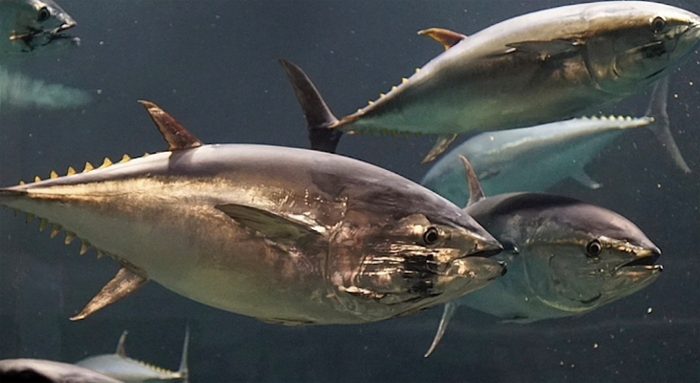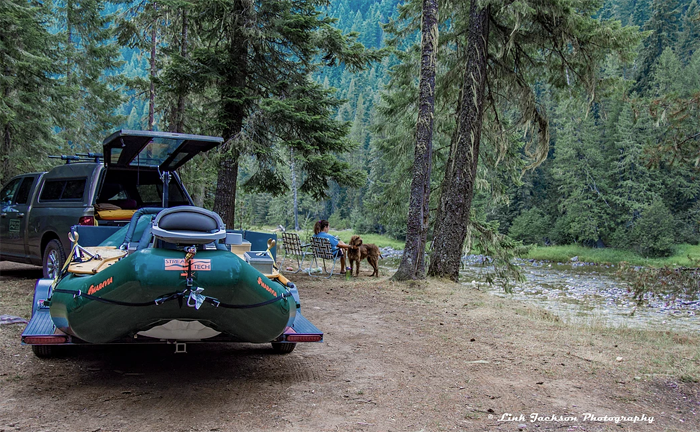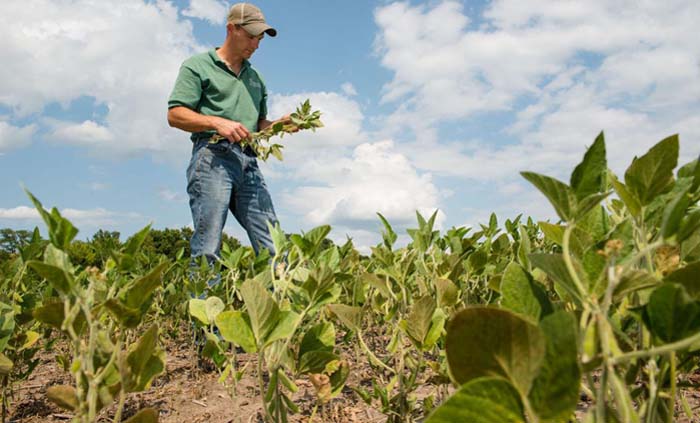
Pacific bluefin tuna. OpenCage.info – creative commons image.
Big Bluefin Tuna Recovering Due to Conservation, But Species Still at Risk
Conservation groups say more needs to be done to protect the imperiled Pacific bluefin tuna. As apex predators, their loss could disrupt the ocean food web, but the Trump administration continues to reject all scientific data with regard to the Pacific bluefin tuna stocks.
Although Pacific bluefin tuna remains a fraction of its historic population, the giant fish is making a comeback off the California coast after a eight-decade hiatus, due to global conservation efforts, Reuters reported.
The world’s love of sushi and rampant overfishing has nearly decimated the species. Its population recently bumped to a meager 3.3 percent of its un-fished level, up from its low of 2.6 percent two years ago, according to Pew Charitable Trusts.
Their slight uptick can be attributed to catch limits imposed by Japan, the U.S., Mexico and other fishing nations.
This is management and effective management and it actually is working,” Gerard DiNardo, director of the Fisheries Resources Division at Southwest Fisheries Science Center, a division of the U.S. National Oceanic and Atmospheric Administration (NOAA) in La Jolla, California, told Retuers.

Image credit Link Jackson Photography.
Streamtech Announces New Boat
Announcing the Streamtech Steelhead Boat. The Steelhead is completely new boat model that comes from a long tradition of river boats designed to be extraordinarily maneuverable, durable and functional for fly fishing and river running. The Steelhead was built to answer requests for a larger boat capable of handling larger cargo loads, bigger white water and yet provide our legendary rowing performance and durability. The Steelhead boat is 14’6” long, 7’ wide with 21” tubes that diminish to 18” on the end resulting in a very large cargo bay and lower profile to the wind.

Is heartland soybean farmer the missing link in fish farming? Dept. Agriculture.
How Technology and America’s Heartland Play Key Roles in a Healthy Seafood Diet
Learn how America’s heartland is a key player in aquaculture.
Fish farming–or aquaculture–is a winning situation. It’s a win for the economy, a win for the consumer, and a win for the planet. Seafood farmers along the nation’s coasts are growing fish to help feed a growing population in an environmentally responsible way. And America’s heartland is a key player.
American soybean and other grain crops are improving the ratio of fish needed to feed fish. In the early days of aquaculture, farmed salmon and other carnivorous fish required a mostly wild-capture diet–more than 50 percent of the feed. Today, that is down to about 20 percent.
There is potential to reach zero percent, for multiple reasons,” said Don Kent, President and CEO of Hubbs-SeaWorld Research Institute. “First, we can move toward smarter use of fish parts, harnessing what we currently throw away. We don’t eat the head or trimmings left over from processing, for example, which can be recycled into feed instead. Second, advanced feed technology means fish that typically eat other fish in the wild really don’t need to do that in captivity. It’s all a matter of the right balance of the right nutrients.”

